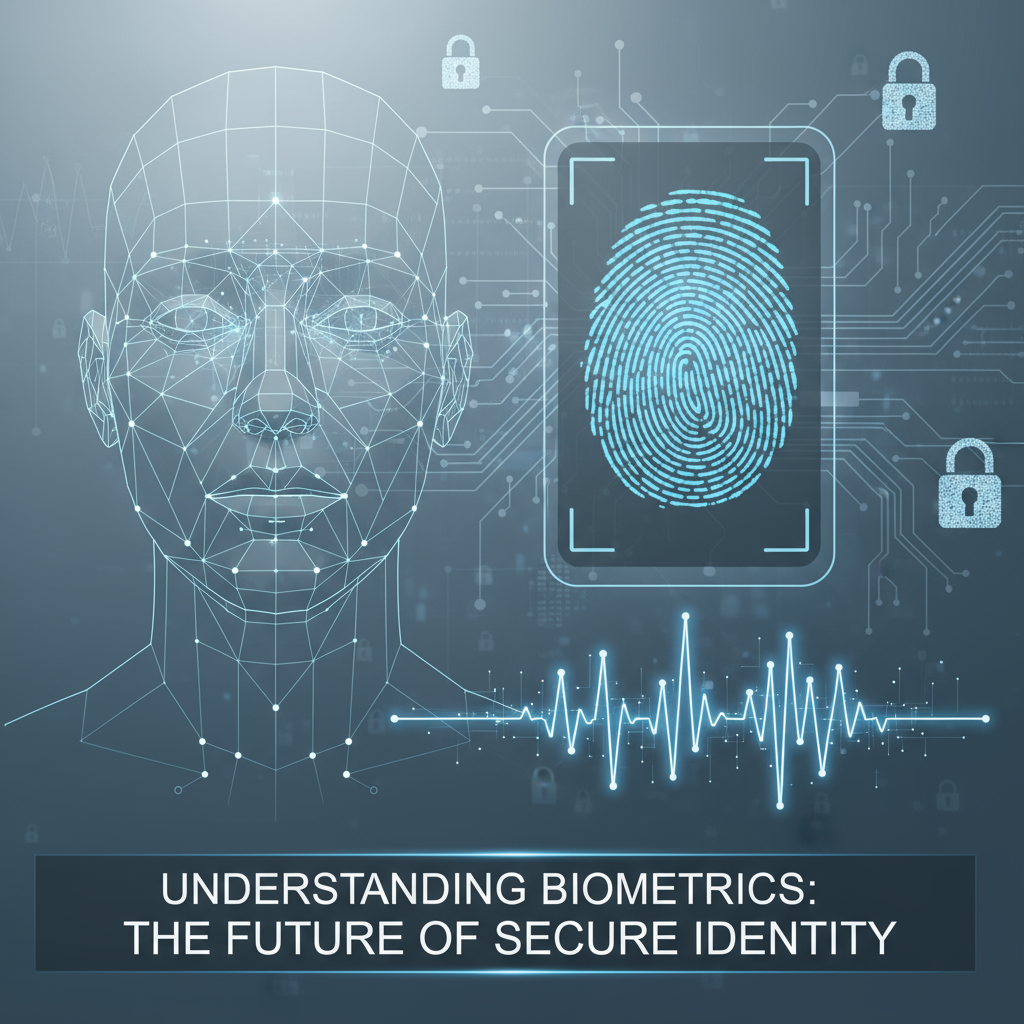Biometric technology has revolutionized law enforcement practices worldwide. From its early beginnings in the 19th century with simple fingerprinting to today’s AI-powered multimodal systems, biometrics have transformed how identities are verified, crimes are solved, and security is maintained. This blog explores the comprehensive journey of biometrics in law enforcement, highlighting key milestones, technological advancements, ethical considerations, and future trends shaping this critical domain.
Historical Foundations: The Birth of Biometric Identification (1800s-1920s)
The origins of biometric identification in law enforcement trace back to the 19th century, when pioneering minds sought systematic methods to confirm individual identities.
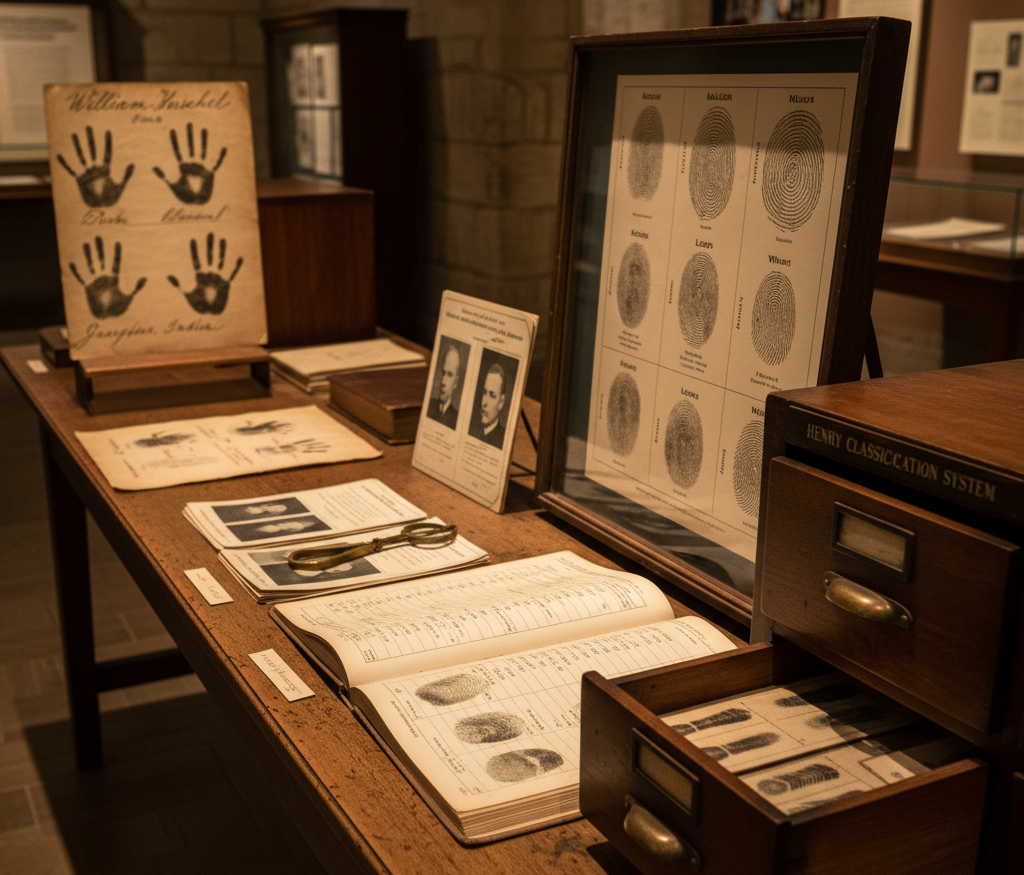
Pre-Digital Era Pioneers
- 1858: Sir William Herschel initiated the first systematic capture of hand and finger images to enforce contracts in India, laying the foundation for biometric verification.
- 1870: Alphonse Bertillon developed anthropometry, known as Bertillonage, which measured body parts to distinguish individuals, becoming one of the earliest forensic identification techniques.
- 1892: Sir Francis Galton advanced fingerprint classification, developing the first systematic approach to categorize fingerprints based on patterns—a breakthrough still foundational today.
- 1896: Sir Edward Henry collaborated with Galton to implement fingerprint classification and storage systems for the Bengal Police, marking modern fingerprinting’s official institutional adoption.
Early Law Enforcement Adoption
- 1903: The New York Civil Service Commission commenced fingerprinting to prevent identity fraud in employment processes, signifying biometric applications beyond criminal justice.
- 1924: The FBI Identification Division was formed, consolidating hundreds of thousands of fingerprint records, which established a centralized repository aiding investigations nationwide.
These early developments marked the transition from manual identification to institutionalized biometric data management in law enforcement.
The Automation Revolution (1960s-1990s)
The mid to late 20th century saw transformative automation that ushered biometrics into the digital age.
Technology Catalysts
- 1969: The FBI spearheaded development of Automated Fingerprint Identification Systems (AFIS), enabling computers to match fingerprints rapidly, replacing time-consuming manual comparisons.
- 1985: Technologies such as hand geometry and vascular pattern recognition were patented, expanding biometric modalities.
- 1988: The Los Angeles Sheriff Department implemented digital mugshot databases integrated with biometric details, foreshadowing multimedia biometric systems.
Facial Recognition Emergence
- 1991: Real-time automated facial recognition technology emerged, enhancing surveillance capabilities for law enforcement.
- 1992: Formation of the NSA’s Biometric Consortium aimed to unify efforts and standards for biometric technologies.
- 1993: The DARPA FERET program launched for facial recognition capabilities, improving accuracy and deployment readiness.
- 1999: FBI launched the Integrated Automated Fingerprint Identification System (IAFIS), digitizing and automating millions of fingerprint files, drastically improving investigative efficiency.
This era marked the shift from stand-alone biometric methods to integrated, automated systems that combined multiple data types.
Digital Transformation Era (2000s-2010s)
The 21st century’s security landscape accelerated biometric adoption with standardized practices and extensive system integration.
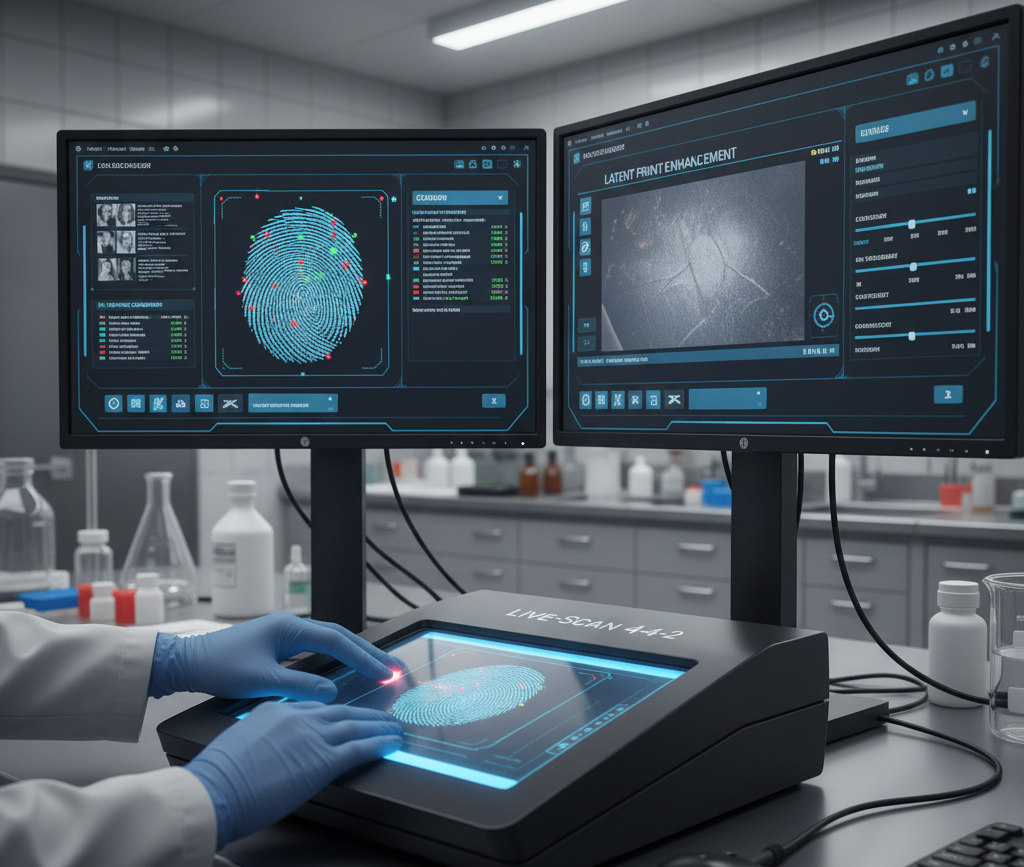
Post-9/11 Security Enhancement
- 2001: Facial recognition was used at Super Bowl events for the first time, marking one of the earliest large-scale public deployments.
- 2002: ISO formed a biometric standards subcommittee, establishing guidelines to harmonize biometric implementations globally.
- 2004: The US-VISIT program launched biometrics for border security, and the Department of Defense implemented Automated Biometric Identification Systems (ABIS).
- 2004: Homeland Security Presidential Directive 12 mandated biometric-based identification for federal personnel.
Technological Sophistication
- Advanced AFIS systems began processing fingerprint data at unprecedented scales, capable of millions of matches per second.
- Multimodal biometric systems combining fingerprints, facial recognition, and iris scans enhanced identity verification reliability.
- Collaborative interstate databases improved cross-jurisdictional information sharing and suspect tracking.
Next Generation Systems (2010s-Present)
The FBI’s Next Generation Identification (NGI) system epitomizes modern biometrics, offering massive data capabilities and rapid identification.
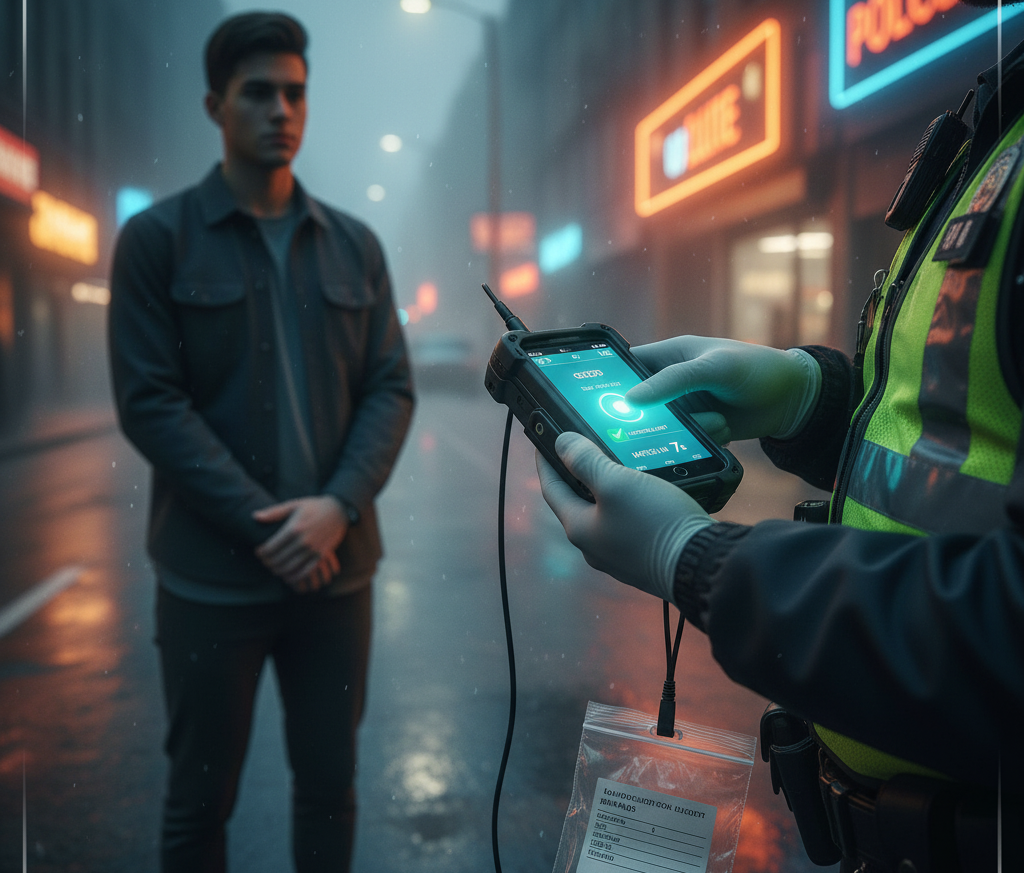
FBI’s NGI System Revolution
- 2011: NGI system’s first increment was deployed, featuring improved biometric matching algorithms with accuracy rising from roughly 92% to over 99.6%.
- 2013: National Palm Print System launch added palm prints as biometric identifiers complementing fingerprints.
- 2020: Launch of NGI Iris Service incorporated iris recognition, achieving over 99% identification accuracy.
Mobile and Real-Time Capabilities
- Rapid Identification Service (RISC) allowed sub-10-second response times for fingerprint matches.
- Law enforcement personnel increasingly adopted mobile biometric devices enabling on-scene fingerprint and iris scans, improving field identification speed and accuracy.
BioSled technology integrated multiple biometric modalities into handheld devices, further empowering frontline officers.
Modern Multimodal Biometric Systems
ABIS Evolution Beyond AFIS
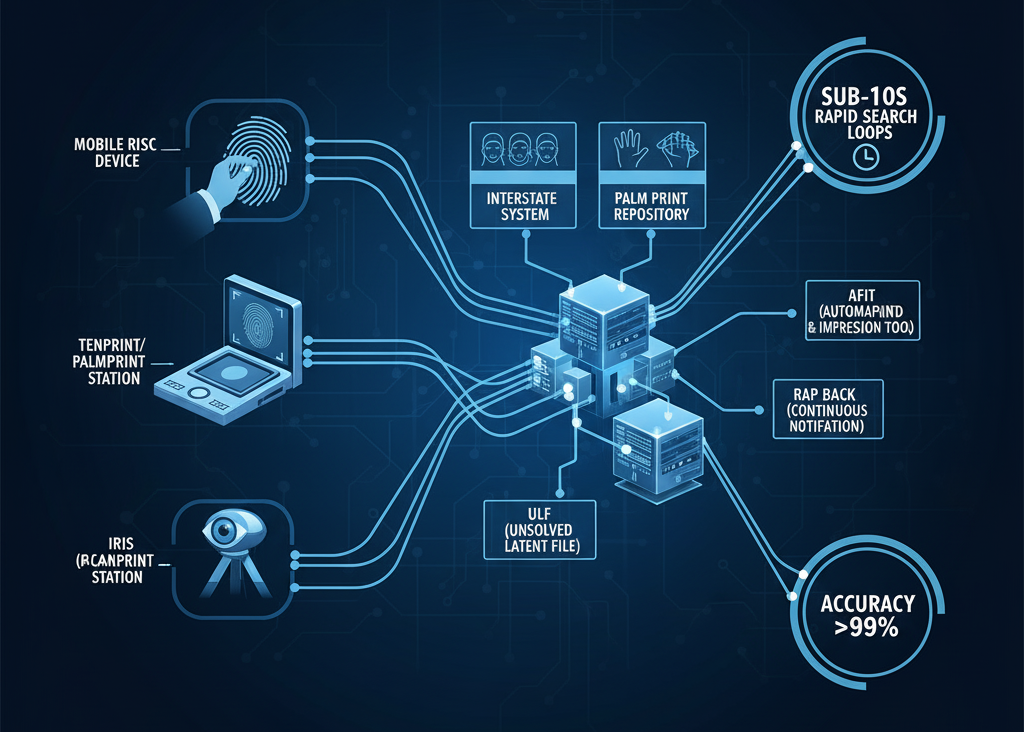
Automated Biometric Identification Systems (ABIS) expanded the scope from fingerprints to include facial, iris, and palm biometrics, offering robust multimodal capabilities.
- These interoperable systems facilitate seamless data exchange across federal, state, and local law enforcement databases.
- Enhanced forensic applications enable latent print analysis and cold-case investigation breakthroughs.
Current Applications
- Border security agencies utilize real-time biometric matching and watchlist verification to intercept threats quickly.
- Criminal investigations benefit from accelerated suspect identification processes, improving case resolution rates.
- Biometric checks are now a standard part of background verifications for employment and licensing, ensuring identity integrity.
Artificial Intelligence Integration and Future Trends
AI-Enhanced Biometric Systems
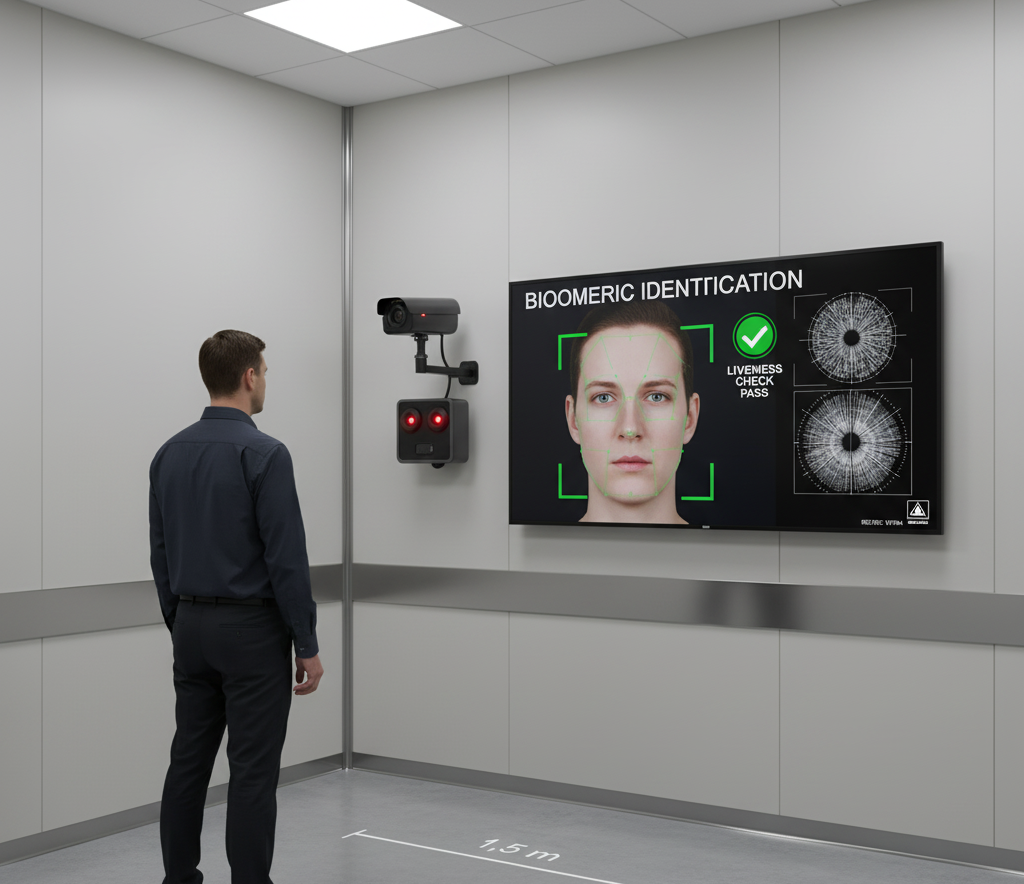
Machine learning algorithms optimize biometric matching accuracy while reducing false positives, driving ongoing system improvements.
- AI-powered automated analysis extends to behavioral biometrics and predictive policing techniques, strengthening law enforcement capabilities.
- Predictive analytics aid in risk assessment, threat detection, and resource deployment decisions.
Privacy and Ethical Considerations
As biometric use grows, concerns around data security, mass surveillance, and civil liberties intensify.
- The immutability of biometric data demands stringent privacy protections to prevent misuse or breaches.
- Emerging regulatory frameworks seek to balance technological benefits with ethical responsibilities and individual rights, such as GDPR compliance.
Emerging Technologies and 2025 Outlook
Blockchain Integration
Blockchain technology offers promising solutions for secure, decentralized biometric data storage.
- Its immutable ledger capabilities ensure tamper-proof identity verification records.
- Privacy-enhancing techniques like zero-knowledge proofs facilitate secure data sharing without exposing sensitive biometric information.
Future Law Enforcement Applications
- Post-pandemic, contactless biometric modalities will experience widespread adoption.
- Integration with Internet of Things (IoT) devices will enable smarter, automated surveillance systems.
- Multimodal authentication combining several biometric traits will enhance security while reducing error rates.
Challenges and Limitations
Technical Challenges
- Cross-jurisdictional system interoperability remains a hurdle, limiting seamless data exchange.
- Biometric capture is vulnerable to environmental factors impacting data quality.
- Despite advances, false identification rates persist, necessitating ongoing system refinement.
Privacy and Legal Concerns
- Function creep leads to biometric data being used beyond the original purposes without explicit consent.
- Informed consent challenges arise from covert biometric data collection.
- Diverging privacy laws worldwide create regulatory gaps complicating law enforcement use.
Global Perspectives and International Collaboration
International Standards and Cooperation
- INTERPOL’s Biometrics for Frontline Policing initiative exemplifies cross-border collaboration for enhanced public safety.
- Immigration and security applications leverage shared biometric data for effective border management.
- ISO standards drive harmonization to enable interoperability and data exchange worldwide.
Regional Implementations
- Europe prioritizes privacy-first frameworks to comply with GDPR.
- Asia realizes large-scale national identity programs integrating multimodal biometrics for security enhancement.
- Developing nations engage in capacity-building to adopt biometric technologies tailored to local needs.
Conclusion
Biometrics in law enforcement is on a trajectory toward convergence with AI, blockchain, and advanced data science, delivering near-perfect identification capabilities and accelerated processing speeds.
Strategic Recommendations
- Prioritize investments in multimodal biometric systems and enhance interoperability among agencies.
- Implement robust privacy protection mechanisms and comply with emerging regulations.
- Foster international cooperation to standardize protocols and share best practices, enhancing global security efforts.
The evolution of biometrics has profoundly reshaped law enforcement from rudimentary manual systems to sophisticated AI-empowered identification hubs, and its future promises continued innovation balanced with ethical stewardship.

